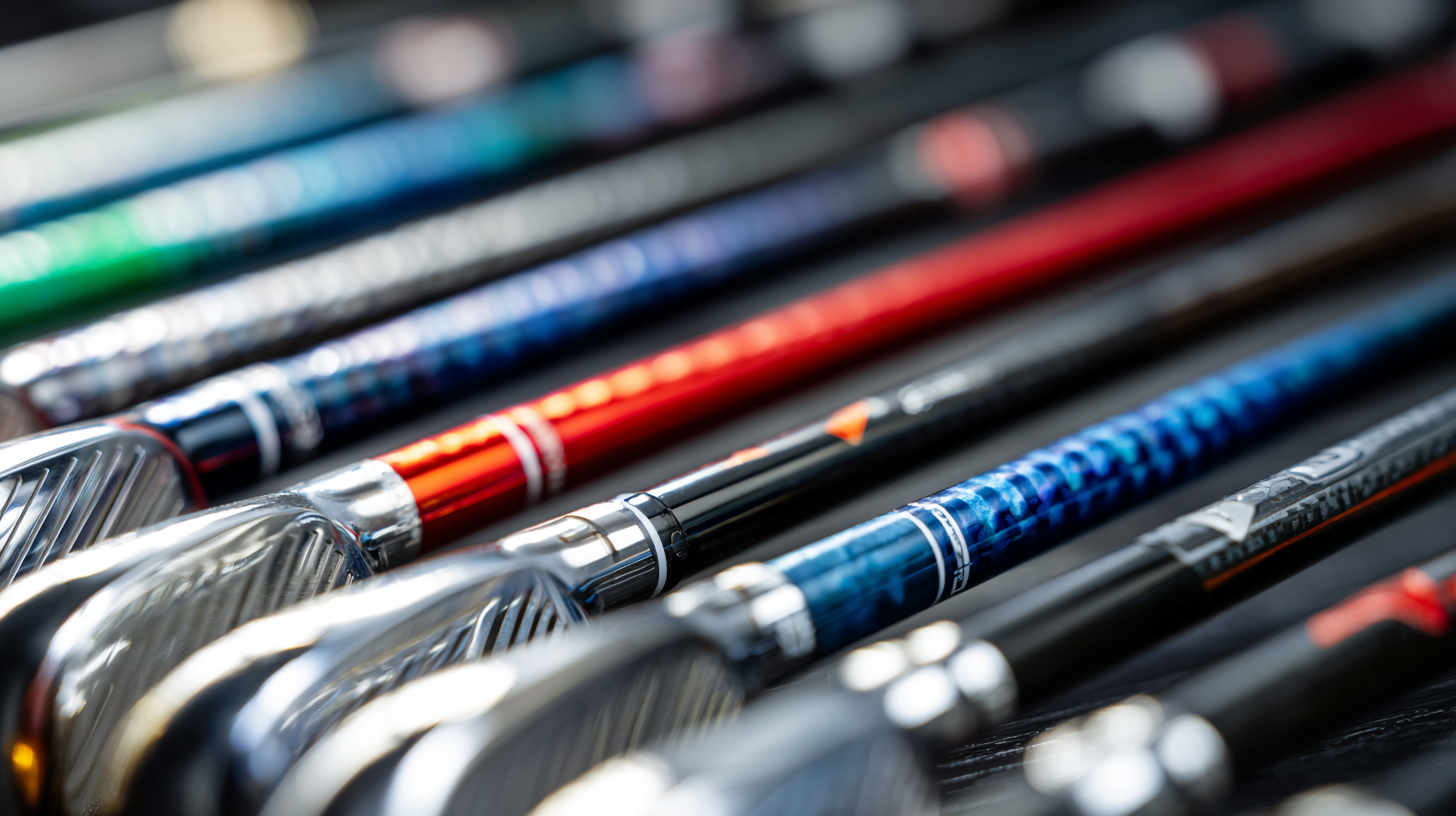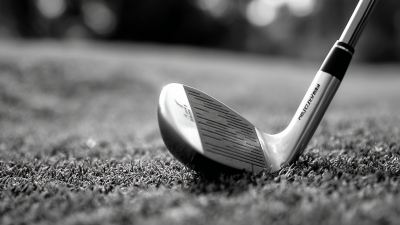The Ultimate Guide to Choosing the Best Golf Shafts for Your Game
When it comes to elevating your golf game, selecting the right golf shafts is paramount. According to renowned golf industry expert Tom Wishon, “The shaft is the engine of the golf club; it has the greatest impact on your performance.” This statement underscores the importance of understanding how different shafts can affect not only swing mechanics but also how each shot plays out on the course.
In this ultimate guide, we will explore the key factors to consider when choosing the best golf shafts for your unique playing style. From shaft flex and weight to material composition, each element plays a crucial role in tailoring your clubs to maximize your potential. Whether you're a seasoned player or a beginner, making informed choices about golf shafts can lead to remarkable improvements in distance, accuracy, and overall enjoyment of the game.
With expert insights and practical tips, we aim to demystify the selection process, helping you understand what works best for you. Prepare to take your game to the next level as we delve into the nuances of golf shafts and how they can transform your performance on the green.

Understanding Different Types of Golf Shafts: Which One is Right for You?
When it comes to selecting the right golf shafts, understanding the different types available is crucial for optimizing your game. Golf shafts can be categorized primarily by their flexibility, weight, and material, each of which affects your swing and ball trajectory. For instance, players with faster swing speeds may benefit from stiffer shafts, while beginners often find more forgiveness with flexible options. It's essential to match the shaft to your swing characteristics for improved performance on the course.
Tips: Start by assessing your swing speed and your typical ball flight. If you're unsure, a fitting session with a professional can provide valuable insights. Additionally, consider the material of the shaft—graphite shafts are lighter and absorb more shock, making them a popular choice for distance, while steel shafts tend to offer more consistency for players who prioritize accuracy.
Another critical factor is the weight of the shaft, which can significantly influence your swing mechanics. Lighter shafts may aid in generating faster swing speeds, while heavier shafts can enhance control. Ultimately, testing out various options will help you discover what feels best during your swing, leading to more confidence and better results on the course.
Factors to Consider When Choosing Golf Shafts for Optimal Performance
When choosing golf shafts for optimal performance, several crucial factors come into play, including flex, weight, and material. The flex of the shaft significantly affects the ball's trajectory and distance; players generally prefer a flex that matches their swing speed and style. Additionally, the weight of the shaft can impact swing speed and control, making it important to select a weight that feels comfortable while enabling precise shots.
Material also plays a vital role in shaft performance. Steel shafts offer durability and consistency, while graphite shafts provide increased distance and a lighter feel. Players should consider their skill level and playing style when determining the best material for their needs. As seen in recent advancements in iron technology, modern designs aim to enhance performance by integrating features like control chambers for better distance and accuracy, which can also influence the choice of shafts. Tailoring these factors to one's unique game can lead to significant improvements on the course.

The Impact of Shaft Flex on Your Swing and Game Improvement
Choosing the right golf shaft is crucial for optimizing your swing, and shaft flex plays a significant role in determining how effectively you can hit the ball. A shaft that is too stiff may hinder a golfer's ability to generate necessary clubhead speed, while a shaft that is too flexible can result in a loss of control during the swing. Understanding your swing style and speed can help you select a shaft that aligns with your performance goals, ultimately enhancing your game.
Recent studies have explored the impact of different shaft weights on swing performance, revealing that varying weights can cater to different skill levels and swing properties. For instance, lighter shafts may benefit players seeking greater speed, while heavier shafts could offer more stability. Innovations like ultra-light and flexible shafts challenge traditional conventions, suggesting that the right combination could lead to improved accuracy and distance. By carefully considering shaft flex and weight, golfers can make informed decisions that support their development and enjoyment of the game.
Materials and Technology: How They Influence Golf Shaft Selection
When selecting golf shafts, understanding the influence of materials and technology is crucial for enhancing your performance on the course. Golf shafts are primarily made from either steel or graphite, each offering unique benefits. Steel shafts are known for their durability and consistent performance, often preferred by players who value control and accuracy. On the other hand, graphite shafts are lighter and can help generate greater swing speeds, making them suitable for players seeking distance and increased power.

Modern technology has also introduced advanced designs and manufacturing techniques that further impact shaft performance. Features like varying flex profiles and weight distributions allow golfers to find a shaft that complements their swing style. Innovations such as vibration dampening technologies help reduce harsh impacts, improving comfort and feel during play. Therefore, a thorough understanding of these materials and technological advancements can empower golfers to make informed decisions, ultimately leading to a more personalized and effective game.
Custom Fitting vs. Off-the-Shelf: Finding Your Ideal Golf Shaft Solution
When it comes to selecting the right golf shaft, one critical decision golfers face is whether to go for custom fitting or choose off-the-shelf options. According to a study conducted by the PGA, nearly 80% of golfers utilize shafts that do not match their swing characteristics, leading to suboptimal performance on the course. Custom fitting allows players to match shaft flex, weight, and torque to their unique swing mechanics, resulting in better distance and accuracy.
**Tips:** Before making a decision, analyze your swing speed and tempo. If you have a fast swing, consider stiffer shafts that offer less flex, while slower swings generally benefit from more flexible options.
On the other hand, off-the-shelf shafts can offer convenience and lower costs, making them appealing for beginners or casual players. A report from the Golf Industry Show indicates that beginner golfers who use standard shafts can still improve their game, but may miss out on significant gains achievable through a fitted shaft. It's essential to weigh the cost-benefit ratio based on your commitment to the game and performance goals.
**Tips:** If you opt for off-the-shelf shafts, ensure they match your height and clubhead speed. Trying out different club configurations at a local pro shop can help identify which standard options may work best for you.
Related Posts
-

The Ultimate Guide to Choosing the Perfect Golf Set for Every Skill Level
-

The Ultimate Guide to Choosing the Best Men's Golf Clubs for Every Skill Level
-

Ultimate Guide to Choosing the Best Golf Travel Bags for Your Next Golf Adventure
-

Mastering the Greens Your Ultimate Guide to Choosing the Perfect Golf Set
-

Unlocking Distance: How the 7 Wood Boosts Your Golf Game With a 20% Increase in Accuracy
-

Mastering Your Short Game with the Best Golf Wedges for Every Skill Level
